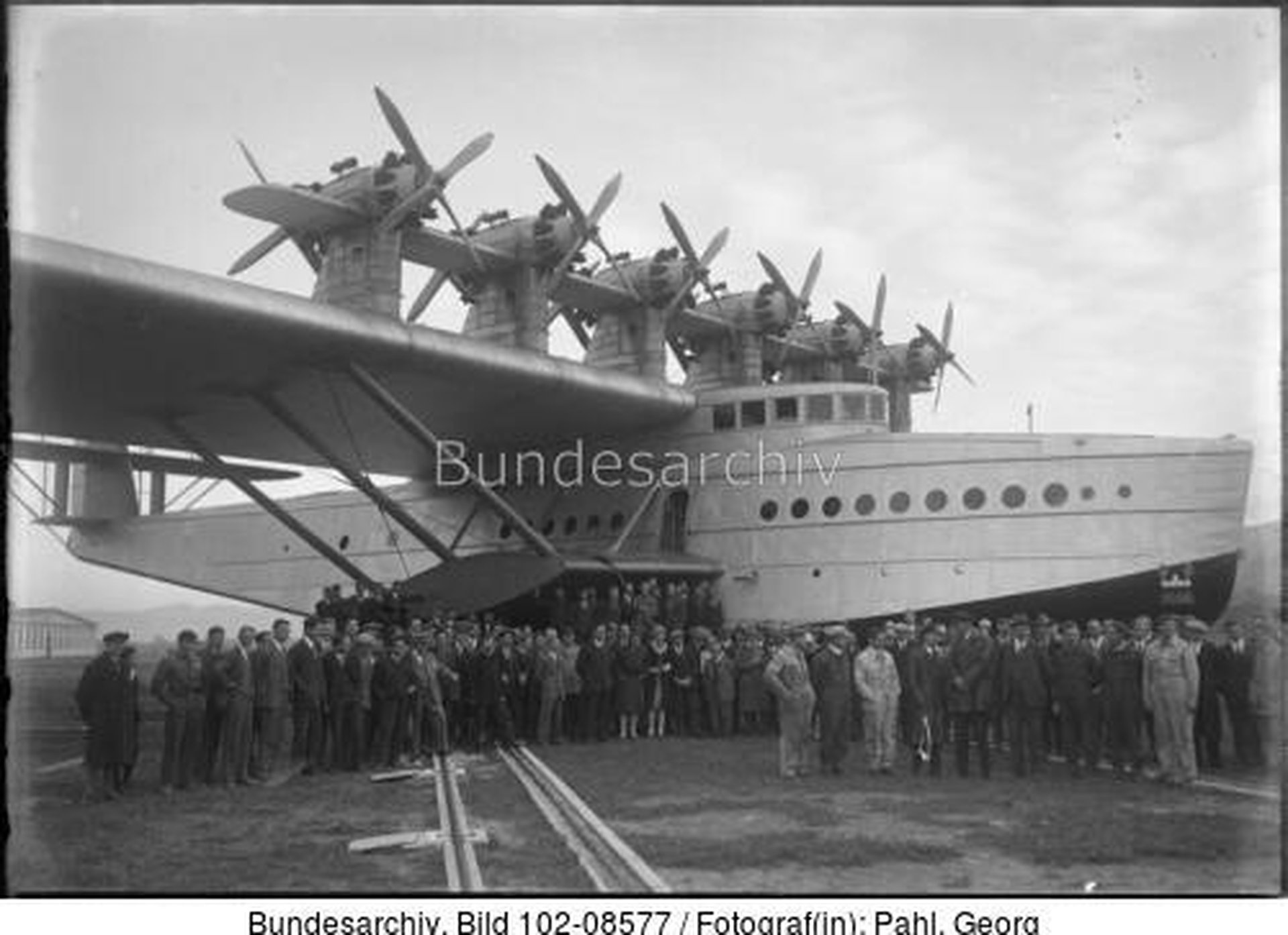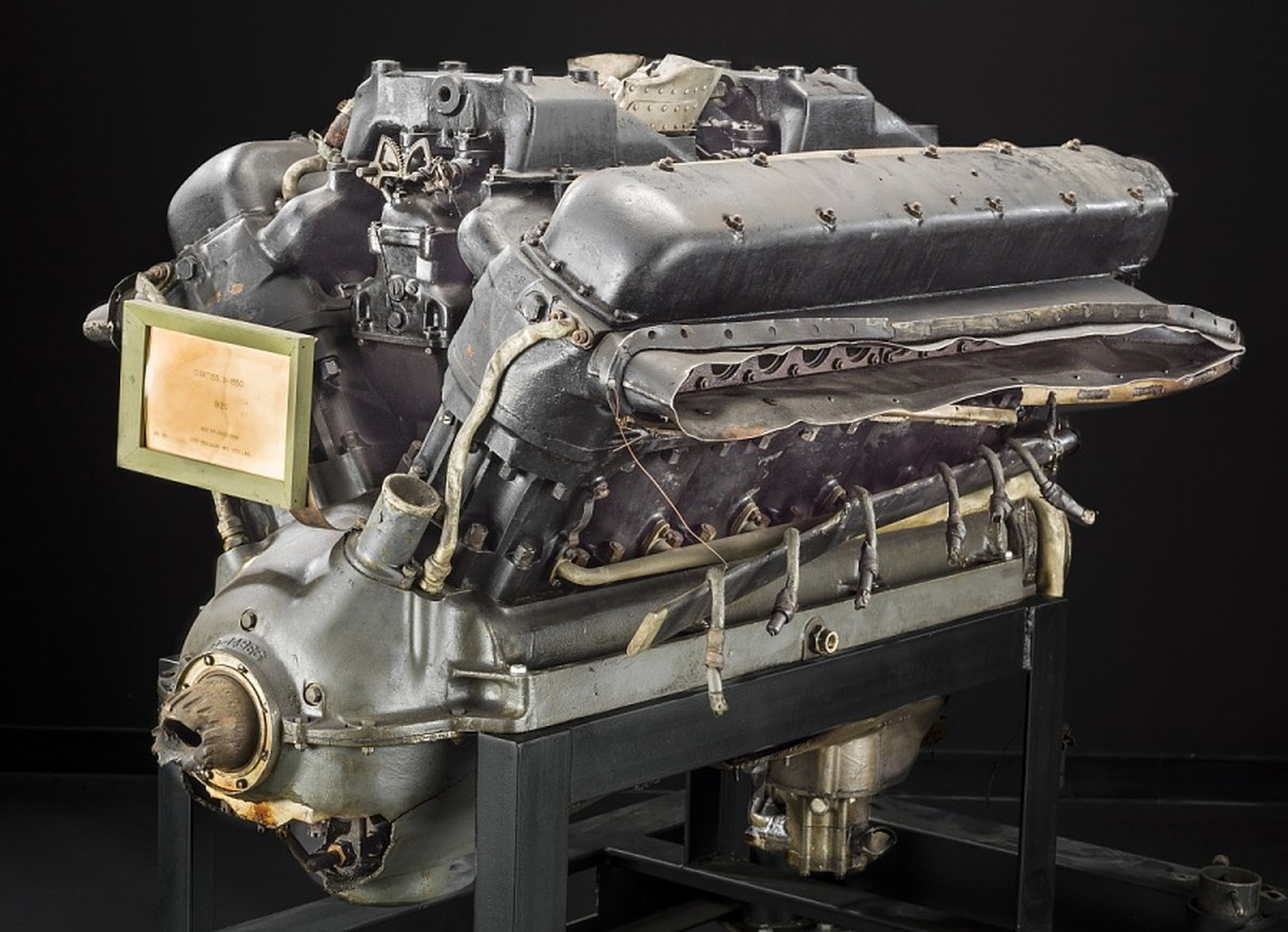Tony’s Scrapbook: Dornier Do-X

This image depicts the Dornier Do-X, a giant flying boat designed by Claudius Dornier in the late 1920s and early 1930s. The text mentions that the Do-X is taking off with sixteen passengers on a return flight to Germany, carrying fifty tons. This flying boat was one of the largest and most powerful aircraft of its time. It was known for its impressive size and capability to take many passengers and cargo long distances.
Overview of the Dornier Do-X
Design and Development
- Designer: Claudius Dornier
- Manufacturer: Dornier Flugzeugwerke
- First Flight: October 1929
- Dimensions:
- Wingspan: 48 meters (157 feet)
- Length: 40 meters (131 feet)
- Height: 10 meters (33 feet)
- Engines: Initially powered by twelve 524-horsepower Siemens Jupiter radial engines, later replaced by Curtiss Conqueror engines.
Notable Features
- Construction: The Do-X was a flying boat with a hull made of duralumin, a type of aluminum alloy, with a boat-like hull that allowed it to land on water.
- Power and Performance:
- Maximum Takeoff Weight: Approximately 56,000 kilograms (123,000 pounds)
- Cruising Speed: Around 175 km/h (109 mph)
- Range: Approximately 1,700 km (1,056 miles)
- Capacity: The Do-X can carry up to 66 passengers on long or 100 passengers on shorter flights.
Historical Significance
- Maiden Voyage: The Do-X’s first flight occurred on October 12, 1929, from Lake Constance (Bodensee) in Germany.
- Noteworthy Flights: One of its most famous flights was a transatlantic journey from Germany to New York City, which took place from November 1930 to May 1931. The route included stops in the Netherlands, England, France, Spain, and Portugal and in Africa, South America, and the Caribbean.
- Publicity: The aircraft generated significant public interest and was often showcased at international exhibitions.
Challenges and Limitations
- Operational Issues: Despite its advanced design, the Do-X faced numerous technical challenges, including engine reliability and maintenance issues.
- Economic Factors: The high operational costs and the onset of the Great Depression limited its commercial viability.
- Legacy: Three Do-X aircraft were built, but they have yet to achieve long-term commercial success. However, they remain an iconic symbol of early aviation innovation.
Cultural Impact
- The Do-X captured the imagination of the public and aviation enthusiasts worldwide. Its size and luxurious design made it a marvel of its era.
- The aircraft’s image and story have been featured in various historical accounts and aviation museums, highlighting its role in the evolution of large passenger aircraft.

The Dornier Do-X was a pioneering aircraft that exceeded the boundaries of aviation technology in the late 1920s and early 1930s. Despite its limited commercial success, it was crucial in demonstrating the potential for large, long-range flying boats. It remains a significant milestone in aviation history.

Claudius Dornier was a prominent German aircraft designer and engineer known for his significant contributions to aviation. Here is an overview of his life and achievements:
Claudius Dornier
Early Life
- Full Name: Claude Honoré Desiré Dornier
- Birth: May 14, 1884, in Kempten im Allgäu, Bavaria, Germany
- Death: December 5, 1969, in Zug, Switzerland
- Education: Studied mechanical engineering at the Technical University of Munich.
Career Highlights
- Early Work: Dornier began his career at Luftschiffbau Zeppelin, where he worked under Ferdinand von Zeppelin. This experience significantly influenced his approach to aircraft design.
- Dornier Flugzeugwerke: In 1914, Dornier established his own company, Dornier Metallbauten GmbH, which later became Dornier Flugzeugwerke. The company focused on designing and manufacturing innovative aircraft, particularly seaplanes and flying boats.
Major Contributions
- Innovative Aircraft Designs:
- Dornier Do J “Wal”: A successful twin-engine flying boat introduced in the 1920s, commonly used for passenger transport, mail delivery, and military purposes.
- Dornier Do X: The largest and most ambitious of Dornier’s designs, this twelve-engine flying boat was a technological marvel of its time, designed for transatlantic flights.
- Dornier Do 17: A widely used German bomber during World War II, known as the “Flying Pencil” due to its slender fuselage.
- Dornier Do 335 “Pfeil”: A unique fighter-bomber with a push-pull engine configuration, offering high speed and performance during World War II.
- All-Metal Construction: Dornier was a pioneer in the use of all-metal construction in aircraft. He believed metal was more durable and reliable than traditional wood and fabric in earlier aircraft designs.
- Seaplane Development: Dornier was particularly interested in seaplanes and flying boats. He designed several successful models used for civilian and military purposes, significantly advancing their capabilities and performance.
Legacy
- Influence on Aviation: Dornier’s designs and innovations had a lasting impact on aviation, particularly in developing large aircraft and using all-metal construction techniques.
- Post-War Contributions: Dornier continued to be involved in aircraft design and manufacturing after World War II, contributing to developing new technologies and aircraft models.
- Recognition: Claudius Dornier is a critical figure in early aviation history. His innovative designs and engineering achievements have left a lasting legacy.
The Curtiss Conqueror engine was a significant upgrade for the Dornier Do-X. And did I mention it’s also a connection to Buffalo, NY, manufactured by the Curtiss Aeroplane and Motor Company? Absolutely!
Here are the specifications and key features of the Curtiss V-1570 Conqueror engines used in the Do-X:

Curtiss V-1570 Conqueror Engine Specifications
General Characteristics
- Type: Liquid-cooled V-12 aircraft engine
- Displacement: 1,570 cubic inches (25.7 liters)
- Configuration: 60-degree V-12
- Bore and Stroke: 5.5 inches (140 mm) bore and 6.0 inches (152 mm) stroke
Performance
- Power Output:
- Takeoff Power: Approximately 600 to 675 horsepower (450 to 503 kW), depending on the specific variant and tuning.
- Maximum Continuous Power: Approximately 600 horsepower (447 kW)
- Compression Ratio: This ratio is typically around 6:1, though variations exist between different versions.
Construction Features
- Cooling System: This system is liquid-cooled, using ethylene glycol coolant.
- Fuel System: Carbureted, usually with dual carburetors.
- Ignition System: Dual ignition with two spark plugs per cylinder for improved reliability and performance.
Applications
- Dornier Do-X: The Do-X initial power system included twelve Siemens Jupiter radial engines. However, due to performance and reliability issues, these were replaced by Curtiss V-1570 Conqueror engines to provide better power and efficiency.
Impact on Dornier Do-X Performance
- Improved Reliability: The switch to Curtiss Conqueror engines addressed some of the reliability issues faced by the original Siemens Jupiter engines.
- Enhanced Power: The increased horsepower provided by the Conqueror engines allowed the Do-X to achieve better takeoff performance and overall operational capability.
The Curtiss Conqueror engines played a crucial role in the Dornier Do-X’s operational history, helping to realize its ambitious goals.
I just wanted to thank you for reading this far and hope you enjoyed this quick post on the Dornier Do-X. I didn’t realize the connection to Buffalo, NY until I discovered the Curtiss Conqueror engine swap. Tony worked as a mechanic at Curtiss-Wright in the early 1930s, so I wonder if he saw these engines being assembled. Something to think about.
Thanks again, and I’ll see you in the next one!
Discover more from Buffalo Air-Park
Subscribe to get the latest posts sent to your email.
